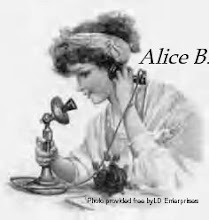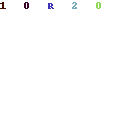| -----------------------------------------------------Highly Recommended ---------------------------------------------------- Build It and They Will Come and Other Myths A fancy website has zero bearing how much money you make online. In fact, you could lose money! We know a better way. It uses one of the simplest Internet tools: e-mail. That's just one of the dozens of techniques and strategies you'll learn at ETR's 5 Days in July Internet Business Building Conference. Find out how ETR can help you build your own online business in just five days here.
Invaluable Lessons in Unexpected Places
By Jason Holland You may know the Franklin Mint as a source of fine collectibles (although the commemorative plates are a bit much for me). But in his essay today, veteran copywriter and marketing strategist Drayton Bird reveals how working with the company years ago helped him learn how to write better ads.
"People don't read advertising, they read what's interesting. Sometimes, it's an ad." Howard Gossage What I Learned at the Franklin Mint -- That Most Marketers Still Don't Know
By Drayton Bird How many geniuses have you met? I met Charlie Chaplin (very briefly) in 1966 while working on publicity for the film Fahrenheit 451. Then I was lucky enough to work with David Ogilvy for eight years. Ogilvy still exerts enormous influence in the marketing business, and if you haven't read Ogilvy on Advertising, you should have your wrist slapped. But there is one remarkable person I never met but wish I had. I surely would have learned a lot from him. That's because he started not one but two groundbreaking businesses -- the Franklin Mint and QVC. That man is Joe Segel. With the Franklin Mint, he pretty much invented the mail-order collectibles business. It was for years pre-eminent in the field, though it has since been bought, sold, screwed up, and run into the ground. I worked for the Franklin Mint in London in 1976. At the time, many people thought I was the bee's knees at direct-response copy. But I learned a valuable lesson -- one you should bear in mind whenever you write or review copy. A Near-Impossible Task My first job at The Mint was a letter to sell some medallions celebrating the achievements of the Kings of Belgium. This was quite a challenge. At least one of them -- Leopold II -- was a mass murderer and slave trader, and few of the others were that impressive. After laboring on it for a week, I placed the carefully typed product of my consummate genius in front of my client. He started reading it out loud in sonorous tones. After the heading and first paragraph, he paused, gazed at me over his bifocals, and asked: "What do you suppose the reader would like to know next?" Well, you know what? I was flummoxed. I had been writing copy for, oh, nearly 20 years. I had been creative director of a big London agency. My copy had sold a bodybuilding machine called the Bullworker all over the world. Yet I had never given thought to one simple fact: The minute you have written something, you must ask yourself what is going through the reader's mind. Good Copy Is Like a Conversation The great novelist Evelyn Waugh put it very well. He was writing to his wife, complaining that her letters were dull. (Hardly surprising. Unlike him, she was not a literary genius.) "A good letter," he told her, "should be like a conversation." Same goes for a good sales letter. When you write good copy, you "say" something. Then you imagine the reaction in the reader's mind -- and respond appropriately. That was what I failed to understand until my client at the Franklin Mint pointed it out to me. As my friend Joe Sugarman has said, the only purpose of each line of copy is to make the reader read the next one. This is immensely important, particularly when it comes to the MOST important sentence in your copy. That sentence is the first one. The headline in an ad. The teaser on an envelope. The start of the sales letter. The opening line in a commercial. Too many get the reader's attention -- but they are "stoppers," not "starters." Five Good Examples What sort of lines force you to read on? Take a look at these: -
"Have you ever seen a bald sheep?" (Charlie Kasher's opening to a 30-minute radio spot for a hair-growth product) -
"Do you lock the bathroom door behind you -- when there's nobody else home?" (Bill Jayme's envelope line for Psychology Today) -
"Cash if you die. Cash if you don't." (WWAV agency's line to sell an insurance product) -
"Do you believe in life after death?" (About the only decent envelope line I ever wrote -- for Save the Children) -
"If the list upon which I found your name is anything to go by, this is not the first, nor will it be the last, invitation you will receive to subscribe to a magazine..." (Ed McLean's opening for Business Week -- the first direct-mail letter he ever wrote) All of the above compel further readership. But you must have that same desire to keep people reading with every line you write. Two Old Tricks Your copy must flow logically. Mine doesn't always. I've found that it helps to sum up each paragraph with a few words in the margin, and then see if they make sense in sequence. Another thing that helps has to do with verbal technique. "Carrier" words and phrases -- like And, Also, Moreover, What is more, In addition to -- at the start of sentences keep people reading. So do questions at the end of paragraphs. Why is this? Because you have to keep reading to get the answer. (The above two sentences just demonstrated what I mean.) Your Homework While I was drafting this essay, I spent some time watching QVC. I suggest you do the same. And take notes. Pay attention and write down all the techniques they use. Then see if you are using those techniques in your sales copy. Here are some things I noticed in just the first few minutes: 1. They demonstrate -- and nothing makes a stronger sales pitch than a good demonstration. 2. They're friendly and helpful -- not loud, aggressive, or in your face. 3. The whole deal is on the screen throughout the spot. 4. There's tons of information. They're not afraid to talk at length or repeat themselves. 5. They use persuasive references -- e.g., the fact that a Diamonique designer had created something for Hillary Clinton. Success does not come from one big idea, but from relentless application to detail. You see this on QVC. One last thought... David Ogilvy once told me that the secret of success in the marketing business is charm. And what makes you think someone is charming? They seem interested in you. They listen to what you say. They pay attention. You must be genuinely interested enough in your readers to try and imagine what is going through their minds -- and respond to it. Then you will charm them all the way to the order form. Bad copy does not do that. It is written from the writer's point of view, not the reader's. [Ed. Note: Veteran copywriter and direct-marketing strategist Drayton Bird has worked with American Express, Ford, Microsoft, Visa, Procter & Gamble, and scores of other clients during his five-decade career, which included a stint as international vice-chairman and creative director with Ogilvy & Mather. In 2003, he was named by the Chartered Institute of Marketing as one of 50 living individuals who have shaped today's marketing. Ready for more marketing insights from Drayton Bird? For 101 ideas, free case studies, and articles on direct-marketing topics like the one you just read, and a 28-day free trial of Drayton's Commonsense Marketing Series, go here.] --------------------------------------------------Highly Recommended -------------------------------------------------- Get Michael Masterson's Bestselling Book, Ready, Fire, Aim... for Free Ready, Fire, Aim is considered a business-building bible by countless readers of this New York Times, Wall Street Journal, and Business Week bestseller. "If you're thinking about starting a business, don't -- until you've finished reading this book. It will save you thousands of dollars and years of time and effort," says Scott Martineau, founder and CEO of ConsciousOne.com. And Brent Jones, founder of Affinity Lifestyles, says, "I am going to grow my company to over $100 million! Now, I know I can do it. I have a clear roadmap." Ready, Fire, Aim contains the secret blueprint that Michael used to craft not one... but TWO $100 million+ business empires... And now this breakthrough business book is available totally free to readers of Early to Rise... Find out more here.
"Really Brought the Story to Life." "I very much enjoyed the account of your ascent of Kilimanjaro. That's a climb I want to make myself, and I have just enough hiking experience to appreciate perhaps how tough it really was to do. I especially appreciated your candor in sharing about the struggles. That really brought the story to life! "I have total admiration for what you and your climbing group have done. So, congratulations. Well done and thank you, thank you for sharing!" Kevin Chandler --------------------------------------------------Highly Recommended -------------------------------------------------- Chicken, Oranges, Eggs, Apples, Beef, Lettuce, Cereal Bars, Tuna, Peaches, Spinach, Pork, Strawberries... You want to keep your family healthy. But if you feed them these foods because you think they are GOOD for them, you've been horribly misled. Our sister publication, Total Health Breakthroughs, has produced a special report that reveals why the foods you eat and the products you buy may not be as healthful as you think... and what you can do to regain control.
In this free report, you'll discover: -
Why following the USDA's recommendation of eating 5 daily servings of fruits and veggies could be harmful to your health... -
13 foods that are chock-full of dangerous chemicals... -
A sneaky trick Big Business plays to get you to buy products that AREN'T organic... -
3 pesticides that appear illegally in scores of different foods...
Today's Words That Work: Consummate Consummate (KON-suh-mate) -- from the Latin for "bring to perfection" -- means complete or superb; of the highest or most extreme degree. Example (as used by Drayton Bird today): "After laboring on [the sales letter] for a week, I placed the carefully typed product of my consummate genius in front of my client."
We want your feedback! Let us know your thoughts on today's issue. Email us at: AskETR@ETRFeedback.com | 




No comments:
Post a Comment